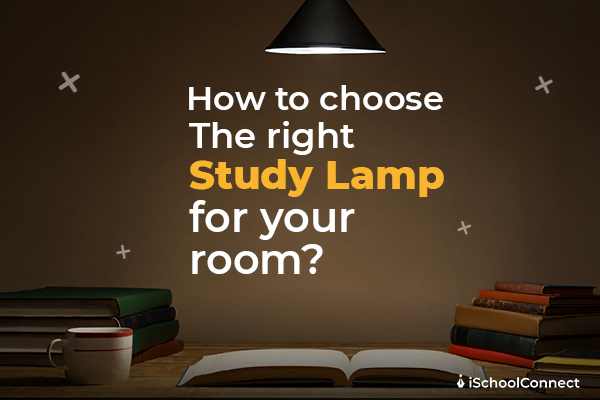Table of Contents
Your guide to buying a study lamp
Your study table is where you spend most of your time doing your tasks and assignments. Choosing a suitable study lamp might help you decrease the strain on your vision and feel more at ease when studying. The market offers a broad range of study lamps, and the primary factor that we look at is the lamp’s appearance. However, while purchasing study lamps, you must consider several other factors mentioned below.
The size of the study lamp
Considering the lamp’s size is the most vital factor when choosing a study lamp. You should make sure it is proportionate to your workstation. An ample light that takes up most of the space on a small table will not benefit.
Similarly, a small study lamp will not offer enough lighting for a large table. Hence, purchasing a study lamp that illuminates the proportions of your study table should be your first criteria.
Brightness
When purchasing a study table lamp online, you must examine its brightness by studying the mentioned Foot Candles (FC) and Lumens (lm). FC is the measurement of a lamp’s brightness on focused objects, whereas (lm) denotes the lamp’s light intensity.
If the lamp has a higher lumen rating, it will generate more light. Therefore, be sure it has the brightness you require when purchasing a light. However, be sure that the light operates on a clean energy basis.
Flexibility and design of study lamp

A conventional lamp, such as the sort used in living rooms with a lampshade, will only cast light in the area where it is positioned. Whereas modern study lamps usually have a flexible or rotating arm and head, allowing you to change your lighting easily, conducive to studying in a poorly lit room.
Glare protection
Ideally, look for a study lamp with a bulb that ranges from 4000K to 6500K. Select the one with glare protection characteristics, such as an eye-caring study lamp that will not strain your eyes if you are looking for extended periods. Look for 450lm from 6 to 9 watts for reading and studying.
Energy consumption and lifespan of a study lamp
You’ll need a study lamp that can last up to 50,000 hours, so you’ll have to change the bulb every six years! This will result in a longer lifespan, which is beneficial to your wallet and the environment.
Practicality
When purchasing study lamps online, consider the lamp’s functionality. Such as how well it illuminates your desk and its versatility and adaptability. For example, if you must share your study space with a roommate, you’ll need a lamp that can be adjusted or emits a lot of light.
Quality and maintenance

Frequently used objects have a high risk of being damaged. Study lamps, which are used almost daily, fall into this category. To minimize damage and additional costs, make a long-term investment in a high-quality and robust study lamp.
Space and price
Consider where you will put your lamp before purchasing it; there is no point in buying a floor lamp if you only have space on your desk. Also, costs vary with the type of lamp, so decide on a budget range and the characteristics you want before purchasing.
Key Takeaways
- Keep the factors mentioned earlier in mind while selecting study lamps that meet your specific needs while also enhancing the ambiance and efficiency of your study desk. Make a list of your objectives and weigh your options.
- If you want to locate the ideal study lamp, go for dimmable illumination with a color temperature of 4000K–6500K.
- A well-designed lamp with a prolonged lifespan provides a conducive studying atmosphere. A reliable and comfortable lamp will safeguard your eyes from unnecessary damage.
We hope you enjoyed reading this blog post. If you have any doubts, you can reach us here.
You can also share your thoughts by leaving a comment below.
Liked this blog? Read next: How to concentrate on studies | 12 absolute tips for you!
FAQs
Q1. What is a good recommendation for a functional and attractive study lamp?
Answer – A reliable and task-oriented study lamp that is easy on the eyes may help you avoid procrastination.
Q2. Is it preferable to study in yellow or white light?
Answer – For the best studying experience, white or “cool” light is preferable, whereas “yellow” or “warm” light is the most soothing. Light, both natural and artificial, has a significant impact on our mood and focus. For reading purposes or study, it’s good to avoid yellow lights as they strain your eyes while reading. White lights are best for these areas, while yellow lights are suitable for living rooms.
Q3. Are LED lights good for reading?
Answer – LEDs make excellent reading lights because they are directional light sources, meaning they only emit light in one direction.






